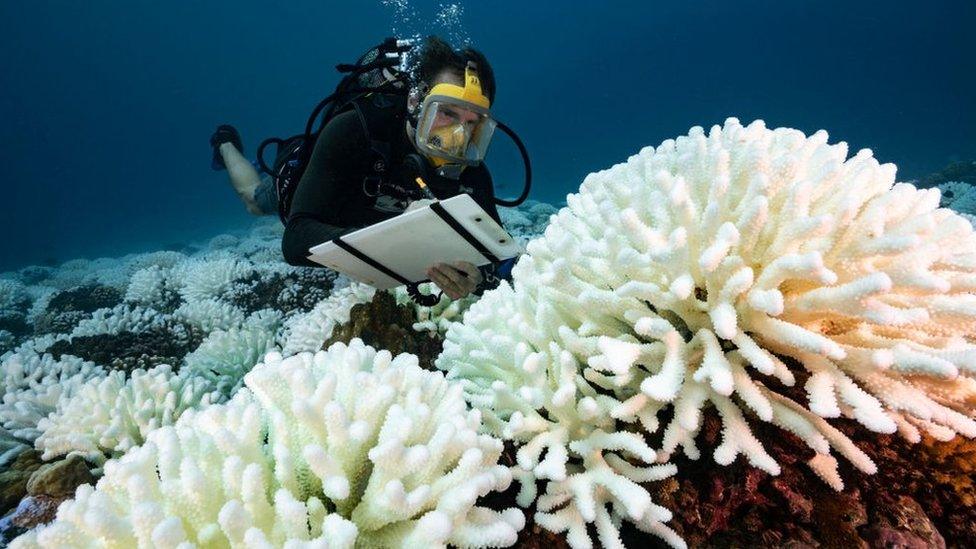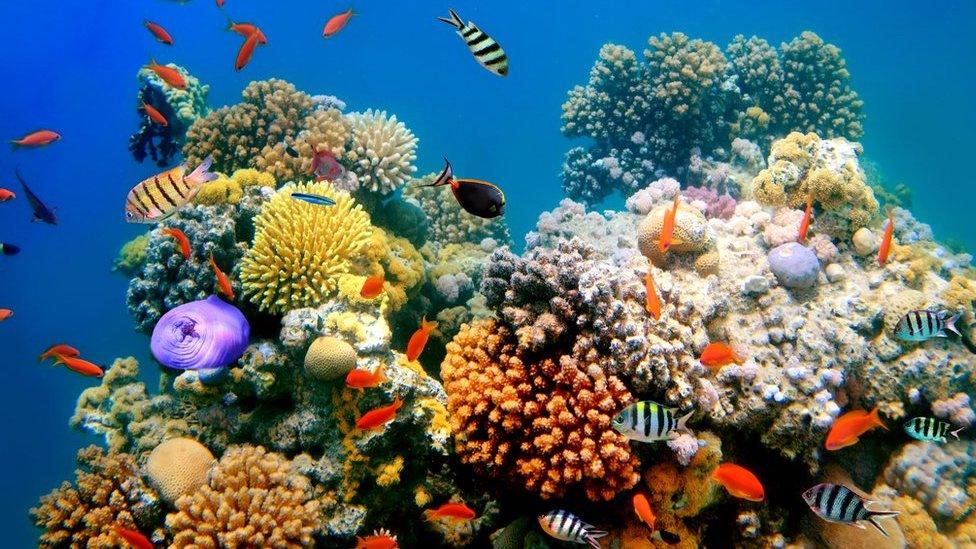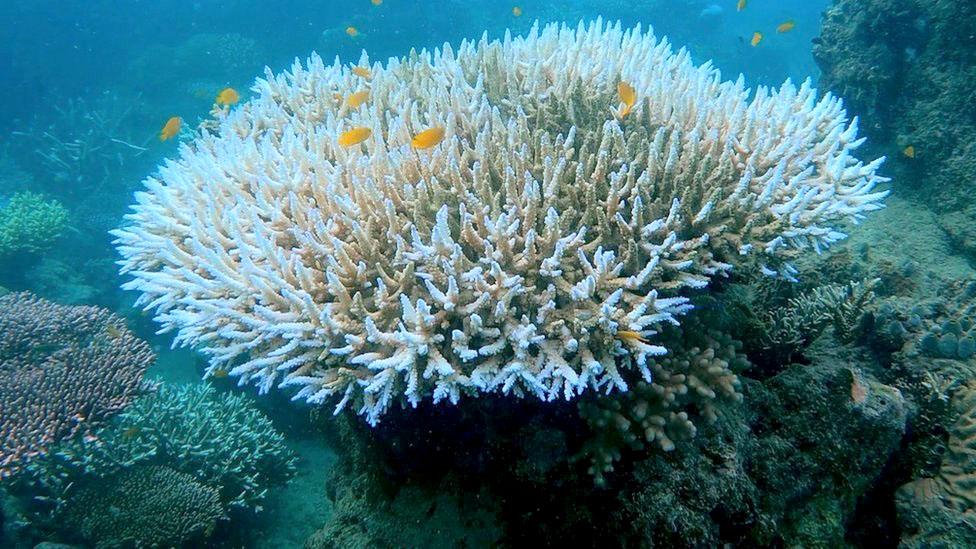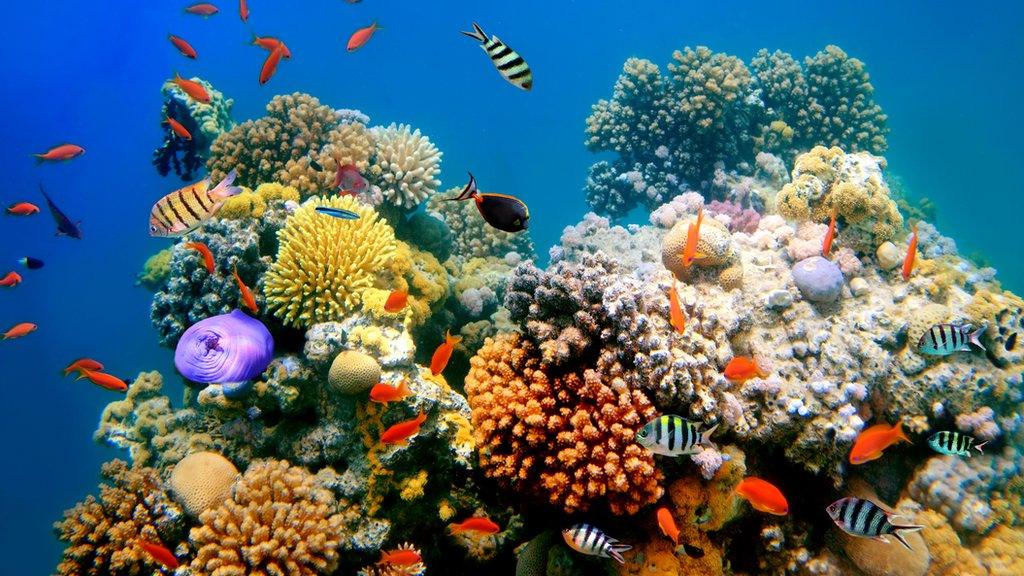Fourth global mass coral bleaching confirmed
- Published
- comments

Coral around the world is turning white and dying due to rising ocean temperatures.
Climate change has led to a fourth global mass coral bleaching event, according to the US National Oceanic and Atmospheric Administration (NOAA).
Bleaching happens when coral turns white because the water it lives in is too hot.
NOAA confirmed coral bleaching was happening in all oceans where coral is present, after weeks of receiving reports from scientists across the world.
Check out our guide to coral bleaching here, and learn what is being done to prevent it.
What is coral?

Coral might look like plants, but they are in fact a kind of animal.
Coral, or polyops as they're also called, are closely related to creatures like sea anemones and jellyfish.
They have a hard, protective limestone skeleton called a calicle, which they use to help anchor them to the sea floor.
They often live in groups called colonies, and can form reefs when lots of colonies join together.
Coral is important for ocean life and is home to 25% of all marine species.
How does coral become bleached?
What causes coral bleaching?
Many types of coral have a special relationship with a tiny plant algae called zooxanthellae - that live in the coral.
These tiny algae produce about 90% of the food the coral needs to grow.
A change in environment can cause the algae to get 'stressed out' and leave the coral.
This then turns the coral white and, with its main source of food gone, it is left very vulnerable.
The last mass global bleaching happened between 2014 and 2016.

Coral bleaching can be triggered by an increase or decrease in sea temperature, or a change in the ocean where it becomes acidic - called acidification.
An increase of just one degree Celsius for four weeks can cause bleaching. If this continues for more than eight weeks, the coral can die.
Coral reefs can survive bleaching, but they need time - often decades - to recover.
As the Earth's temperature changes due to global warming - so does the risk of mass bleaching - because sea temperatures are increasing.
"If given a chance, coral are actually resilient and can recover. But as bleaching becomes more frequent and stronger in intensity, we're really narrowing that window," says Dr Emma Camp at the University of Technology in Sydney, Australia.
Victor Bonito gives his tips on how you can help protect coral reefs
What can be done to help coral?
Research shows that deeper water coral - at between 30-50m depth - could survive global warming of up to 3C.
Some countries are also making coral nurseries, where they are trying to re-grow damaged reefs.
Speaking to the BBC, Dr David Obura an environment scientist from Kenya, explained that coral reefs provide an early warning system for the impacts of a warming planet.
"We need to learn from this to not do this to other ecosystems," he said.
- Published9 April 2020

